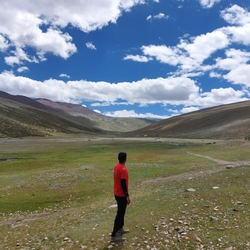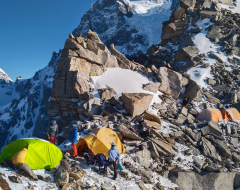Rolling over is very common in the sport of kayaking. Specifically, when it comes to white water kayaking, we use sit-in-kayaks designed to keep us warm and dry. Only pro kayakers know advanced techniques like Eskimo roll, enabling them to roll back on the surface. The beginners are only taught to perform wet-exits, which involve removing the spraydeck underwater and coming back to the surface. As soon as the spraydeck is removed, a heavy amount of water goes into the kayak, which has to be drained on the shore. This article will take you through the steps to drain water from your kayak onshore.
Steps to Follow
Step 1: Take your kayak to shore
First of all, don't be scared. When you roll over, you can easily come up and float. You will be wearing your life jacket. The instructors will retrieve your kayak and help you reach the shore. Drag your kayak out of the water and place it on the drylands of the shore.

Step 2: Stern front and bow back!
Usually, while launching or landing a kayak, we always follow the golden rule, bow front and stern back. But it's the opposite while draining water. You have to keep the stern front and bow back.

Step 3: Remove the drain plug
A kayak can hold more than 20 liters of water. So, it will be difficult to lift the boat and drain water. Remove the drain plug and let the water naturally flow out.

Step 4: Roll, lift, and rock!
A short while after the third step, roll your kayak. Hold the bow side, lift it to 45 degrees and rock it twice. The stagnant water inside the deck and bow will slide over to the stern and flow out of the drain.

Step 5: Vertical placement
Now, lift and place your kayak at 90 degrees to completely drain all the water.

Step 6: Put the drain plug on
Put the drain plug back before going into the water again. Water can even seep in from the backside of the boat.

Here's a beginner's tip - handling a kayak is tougher on land than in water. A kayak weighs around 22 kgs, and in the basic course, the instructors will teach you how to carry and handle the kayak on your own. It will be a little strenuous in the beginning. But, as the saying goes, no pain, no adventure gain! We hope that these steps were helpful. Feel free to reach out to us in case of queries.






